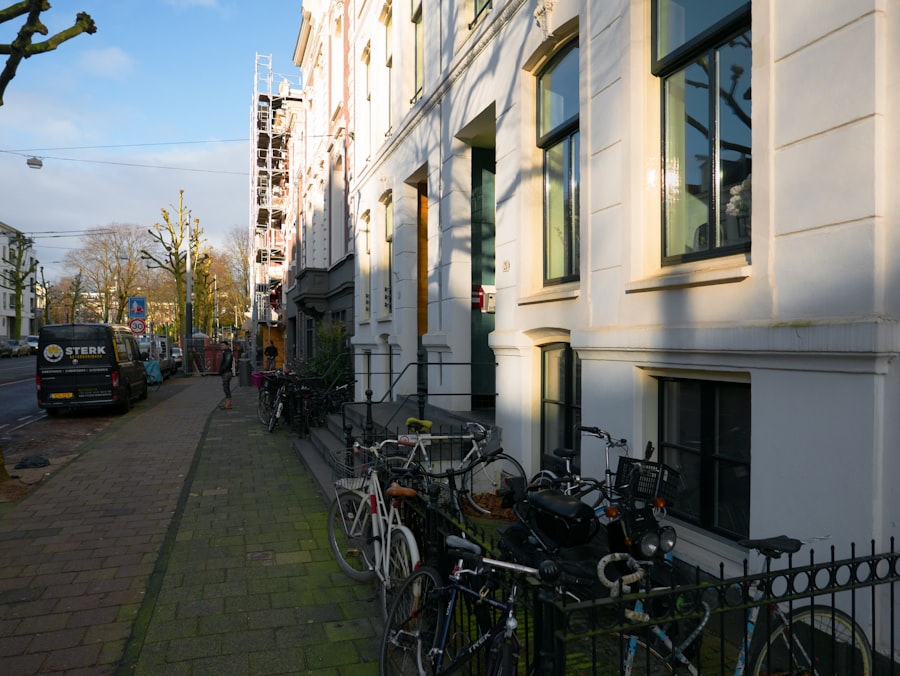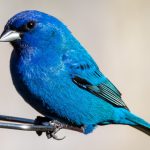Chickens are highly susceptible to heat stress due to their lack of sweat glands and reliance on panting for thermoregulation. Elevated temperatures can rapidly lead to overheating in chickens, resulting in various negative health effects. These include decreased egg production, reduced egg quality, diminished feed intake, and potential mortality in extreme cases.
Heat stress also compromises the immune system of chickens, increasing their vulnerability to diseases and infections. Poultry farmers must comprehend the impact of heat on chickens to implement appropriate mitigation strategies. The effects of heat stress extend beyond individual chicken health, significantly impacting the overall productivity and profitability of poultry farms.
Increased mortality rates, higher veterinary expenses, and reduced product quality are additional consequences of heat stress. Understanding the physiological and behavioral responses of chickens to heat stress is essential for developing effective management strategies. By recognizing heat stress symptoms and comprehending its effects on chicken health and productivity, farmers can implement proactive measures to safeguard their flock’s well-being and maintain optimal production levels.
Table of Contents
Key Takeaways
- Heat stress can have serious effects on chickens, including decreased egg production, decreased feed intake, and even death.
- Providing adequate shade and shelter is crucial to protecting chickens from the harmful effects of heat.
- Access to cool, fresh water is essential for chickens to stay hydrated and regulate their body temperature in hot weather.
- Using cooling methods such as misters or fans can help lower the temperature in chicken coops and provide relief from heat stress.
- Adjusting feeding and foraging schedules to cooler times of the day can help reduce the risk of heat stress in chickens.
Providing adequate shade and shelter
Creating a Comfortable Environment
One of the most important measures for preventing heat stress in chickens is to provide adequate shade and shelter. This can be achieved by ensuring that the chicken coop or housing facility is well-ventilated and protected from direct sunlight. Natural shade from trees or artificial shade structures can also be used to create cooler areas for the chickens to seek refuge from the heat.
Regulating Body Temperature
Additionally, providing access to dust baths and cool, damp soil can help chickens regulate their body temperature and find relief from the heat. Shade and shelter are essential for protecting chickens from the harmful effects of excessive heat. By creating a comfortable and shaded environment, poultry farmers can help their flock avoid heat stress and maintain optimal health and productivity.
Regular Assessment and Maintenance
It’s important to regularly assess the adequacy of shade and shelter provided to the chickens, especially during periods of extreme heat, to ensure that they have access to cool and comfortable areas where they can rest and regulate their body temperature.
Ensuring access to cool, fresh water

Access to cool, fresh water is crucial for preventing heat stress in chickens. During hot weather, chickens will drink more water to stay hydrated and regulate their body temperature through panting. It’s important for poultry farmers to ensure that water is readily available and easily accessible to the flock at all times.
This may involve providing multiple water sources throughout the chicken coop or housing facility, as well as regularly checking and cleaning waterers to maintain water quality. Inadequate access to water can quickly lead to dehydration and heat stress in chickens. To prevent this, farmers should take proactive measures to ensure that their flock has access to cool, fresh water at all times.
This may involve increasing the number of waterers, using larger capacity waterers, or installing automatic watering systems to ensure a constant supply of water. Additionally, adding ice or frozen water bottles to the waterers can help lower the temperature of the water and provide additional relief from the heat for the chickens.
Using cooling methods such as misters or fans
In addition to providing shade and access to cool water, poultry farmers can use various cooling methods to help chickens cope with high temperatures. Misters or sprinkler systems can be installed in the chicken coop or run area to create a fine mist that cools the air and provides relief from the heat. Similarly, fans can be used to improve air circulation and reduce the ambient temperature in the chicken housing facility.
These cooling methods can help lower the risk of heat stress and create a more comfortable environment for the flock. Cooling methods such as misters or fans can be effective tools for preventing heat stress in chickens. By actively lowering the ambient temperature and improving air circulation, these methods can help chickens regulate their body temperature and avoid the negative effects of excessive heat.
It’s important for poultry farmers to carefully consider the layout and design of their chicken housing facility when implementing cooling methods, as well as regularly maintaining and monitoring these systems to ensure their effectiveness.
Adjusting feeding and foraging schedules
During periods of extreme heat, it may be necessary to adjust the feeding and foraging schedules for chickens to minimize the risk of heat stress. Feeding should be done during the cooler parts of the day, such as early morning or late evening, to reduce the metabolic heat generated by digestion. Additionally, providing smaller, more frequent meals can help prevent overeating and reduce the metabolic heat produced by digestion.
Foraging activities should also be encouraged during cooler times of the day to minimize physical exertion in the heat. Adjusting feeding and foraging schedules can help reduce the risk of heat stress in chickens by minimizing their metabolic heat production and physical exertion during the hottest parts of the day. By strategically timing feeding and foraging activities, poultry farmers can help their flock conserve energy and stay cooler during periods of extreme heat.
It’s important to closely monitor the behavior and condition of the chickens when adjusting feeding and foraging schedules to ensure that they are adequately nourished and not experiencing any negative effects from the changes.
Monitoring for signs of heat stress

Recognizing the Signs of Heat Stress
Common signs of heat stress in chickens include panting, wing spreading, reduced activity, decreased feed intake, and drooping wings. Additionally, chickens may exhibit increased water consumption and spend more time seeking shade or cooler areas.
The Importance of Proactive Management
By closely observing the behavior and condition of the flock, poultry farmers can quickly identify signs of heat stress and implement appropriate measures to alleviate its impact. Monitoring for signs of heat stress is a critical aspect of proactive management for poultry farmers. By regularly assessing the behavior and condition of their flock, farmers can identify potential issues early and take prompt action to prevent heat stress from escalating.
Best Practices for Monitoring
It’s important for farmers to be familiar with the typical behavior and appearance of their chickens so that they can quickly recognize any deviations that may indicate heat stress. Regular monitoring should be conducted throughout the day, especially during periods of extreme heat, to ensure that any signs of heat stress are promptly addressed.
Implementing emergency measures if necessary
In severe cases of heat stress, it may be necessary to implement emergency measures to protect the health and well-being of the flock. This may involve temporarily relocating the chickens to a cooler area, such as a shaded barn or indoor facility with adequate ventilation. Additionally, providing additional cooling methods such as ice packs or cold compresses can help lower the body temperature of overheated chickens.
It’s important for poultry farmers to have a plan in place for responding to emergency situations related to heat stress and be prepared to take swift action if necessary. Implementing emergency measures is crucial for preventing serious health complications or fatalities resulting from heat stress in chickens. By having a clear plan in place for responding to emergency situations, poultry farmers can quickly address any issues that arise and minimize the impact on their flock.
It’s important for farmers to regularly review and update their emergency response plan for heat stress, as well as ensure that all necessary supplies and equipment are readily available when needed. Additionally, having a working relationship with a veterinarian who is familiar with poultry health can provide valuable support in implementing emergency measures if necessary. In conclusion, understanding the effects of heat on chickens is essential for implementing effective management strategies to prevent heat stress and protect the health and well-being of the flock.
Providing adequate shade and shelter, ensuring access to cool, fresh water, using cooling methods such as misters or fans, adjusting feeding and foraging schedules, monitoring for signs of heat stress, and implementing emergency measures if necessary are all important aspects of proactive management for preventing heat stress in chickens. By taking proactive measures to mitigate the impact of excessive heat on their flock, poultry farmers can maintain optimal productivity levels and ensure the overall welfare of their chickens.
If you’re looking for more tips on keeping your chickens comfortable, you might want to check out this article on turning a shed into a chicken coop. It offers great advice on creating a suitable living space for your feathered friends, which can also be helpful in keeping them cool during a heatwave.
FAQs
What are the signs of heat stress in chickens?
Signs of heat stress in chickens include panting, holding wings away from the body, decreased egg production, lethargy, and loss of appetite.
How can I keep my chickens cool during a heatwave?
You can keep your chickens cool during a heatwave by providing plenty of shade, ensuring good ventilation in the coop, offering cool water to drink, and providing frozen treats such as fruits and vegetables.
What should I do if my chickens are showing signs of heat stress?
If your chickens are showing signs of heat stress, move them to a cooler area with shade, provide access to cool water, and consider using fans or misters to help lower the temperature.
What temperature is too hot for chickens?
Chickens are comfortable in temperatures between 45-85°F (7-29°C). Temperatures above 85°F (29°C) can start to cause heat stress in chickens.
Can I use a sprinkler to cool down my chickens?
Yes, using a sprinkler to create a fine mist can help cool down chickens during a heatwave. Just make sure the water is not directly hitting the chickens and that they have the option to move away from the mist if they choose.
Meet Walter, the feathered-friend fanatic of Florida! Nestled in the sunshine state, Walter struts through life with his feathered companions, clucking his way to happiness. With a coop that’s fancier than a five-star hotel, he’s the Don Juan of the chicken world. When he’s not teaching his hens to do the cha-cha, you’ll find him in a heated debate with his prized rooster, Sir Clucks-a-Lot. Walter’s poultry passion is no yolk; he’s the sunny-side-up guy you never knew you needed in your flock of friends!







